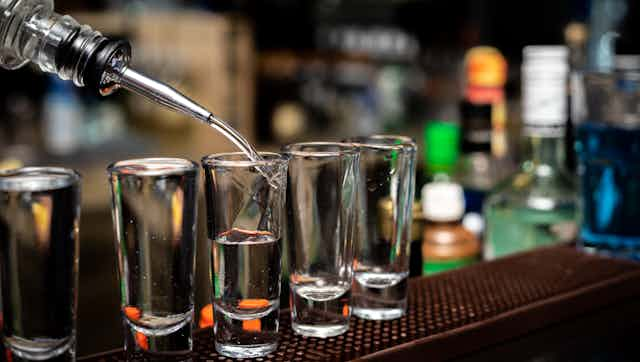There are plenty of health concerns for teens to worry about these days: the effects of e-cigarette and cannabis use, and how drinking could harm their developing brains.
Although relatively more is known about youth drinking in the West, there is a significant knowledge gap when it comes to China, home to the world’s second-largest youth population.
To learn more about how Chinese teens engage with alcohol, we conducted a systematic review of studies on teen drinking behaviours in China over a 30-year period from 1988 to 2018.
In our recently published study, we found high levels of drinking among Chinese adolescents aged 12 to 17 years old. Around half of Chinese teens reported having consumed alcohol at some point. One in four reported drinking in the past month and one in 10 reported binge drinking.
These drinking rates, while significant, are in fact lower than those reported by European, American and Canadian teens.
A second key finding is that teen drinking has not declined since China set the legal drinking age at 18 years old in 2006. This suggests that efforts to reduce underage drinking have not been as effective as intended.

Underage drinking
People who start drinking younger are much more likely to develop alcohol-related problems later in life. This means delaying the start of alcohol use should be a high priority for authorities. Drinking during adolescence, especially heavy drinking, can cause functional and structural brain changes that have long-term consequences for a person’s health and well-being. Our analysis shows there is an urgent need for effective preventive measures to reduce underage drinking in China.
To examine drinking rates among Chinese teens, we reviewed all studies on teen drinking behaviours published in English and Chinese over the past three decades. We identified 186 relevant studies. Nine different measures of drinking were examined, such as lifetime drinking, past month drinking, past year drinking and binge drinking.
We found that around 25 per cent of Chinese teens reported drinking in the past month. This is close to the worldwide average for teens aged 15–19 years. However, it is lower than rates for European teens aged 15–16 years (48 per cent), American adolescents in grade 12 (29 per cent), and Québecois adolescents in grades 7 to 11 (32 per cent).
Another interesting finding was that Chinese male teens consistently reported higher rates of drinking than female teens. This pattern contrasts with trends observed in Europe and North America, where the gender gap in drinking behaviours has been narrowing.
Chinese teens still drinking
We found no evidence that rates of teen drinking declined following China’s implementation of the ban on underage drinking. This contrasts with trends across 30 European countries, where the frequency of drinking among most teens has declined over the past 25 years, though not when it comes to binge drinking.

Similar patterns have been observed in Canada, where rates of binge drinking increased from 1996 to 2013, although no increase was observed for low-risk drinking behaviours. In the United States, drinking among eighth to 12th grade students, including binge drinking, has declined over the past three decades.
One important question is why the Chinese government’s approach has not succeeded when similar policies in other countries have. One possibility is weak or inconsistent enforcement of the underage drinking ban. This may have to do with cultural norms, which are more permissive towards alcohol.
Reducing teen drinking
Prevention strategies that have proven effective in other countries should be adapted to the Chinese context. These could include family- and school-based programs, along with public education campaigns.
Although rates of drinking are lower among Chinese adolescents than in some western countries, they do not show the same downward trend. Further efforts to reduce teen drinking are therefore needed.
Stricter policy enforcement should come with additional measures to reduce easy access to alcohol. Reshaping lenient cultural norms and attitudes towards underage alcohol as well as risk perception towards alcohol is also important.
Drinking can offer some benefits and is often a basis for social connection. Getting teens to delay drinking is arguably a more realistic goal than advocating complete abstinence.
China has a large youth population and even small shifts in social policy and substance use norms could deliver large benefits for the health of individuals and society.

